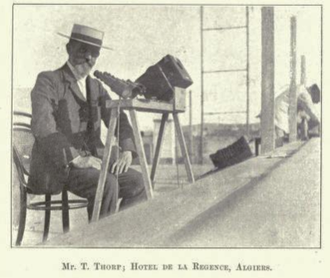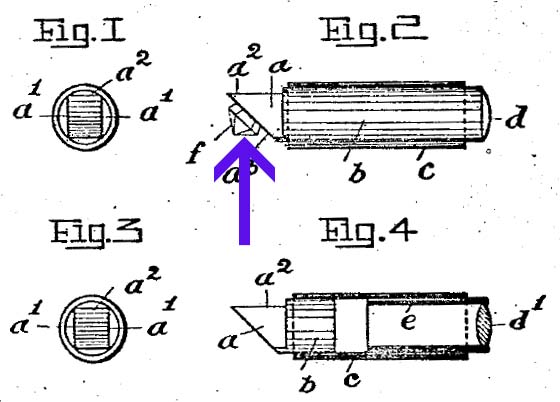

Is 125 Years Out of Date?
 1
1
Meet Thomas Throp from Whitefield, England. He lived from 1850 to 1914. He was a manufacturer of scientific instruments. And he invented a gemological instrument one hundred and twenty-five years ago! The instrument was used for separating mounted diamonds from glass (called paste). A United States patent numbered 574,588 was filed on July 20, 1895 and granted January 5, 1897.

 What did it look like? A glass rod with one end cut at a 45˚mounted in a black tube. The black tube has a lens at the observer’s end. To focus, the glass rod could be slid in or out. The diamond is placed flat against the rod’s cut and polished angle and viewed through the lens. Liquid such as cedar or cassia oil (or water in a pinch) was used to make the stone in question seal to the prism. If it is a diamond, a clear and easy outline of the stone’s table will be observed. If the stone is glass (paste), then it will be barely perceivable at best.
What did it look like? A glass rod with one end cut at a 45˚mounted in a black tube. The black tube has a lens at the observer’s end. To focus, the glass rod could be slid in or out. The diamond is placed flat against the rod’s cut and polished angle and viewed through the lens. Liquid such as cedar or cassia oil (or water in a pinch) was used to make the stone in question seal to the prism. If it is a diamond, a clear and easy outline of the stone’s table will be observed. If the stone is glass (paste), then it will be barely perceivable at best.
The description sounds like a limited refractometer. “Now as the refractive power of the diamond greatly exceeds that of any other known crystal or medium used in imitation of the diamond,” Thomas explained in the patent, “a considerable amount of light is reflected from its surface, so that it remains quite visible when immersed in or looked at through a medium which renders ordinary crystals or paste invisible or nearly-so.” The result, a clear image of the diamond’s table facet will appear in the end of the glass rod adjacent to the magnifying lens. Whereas the paste’s image will be nonexistent of barely visible.
A Moving Target
In today’s world, one could use a fiber optic rod. Refractive Index liquid is now available. And the image could be projected into a computer. Now, of course, we have several diamond simulants that would easily baffle the instrument. However, remembering that the instrument is 125 years ago and most likely quite effective for the time, we must credit Thomas for possibly inventing a gemological instrument before there were gemologists.
Respectfully submitted,
Bill Hoefer